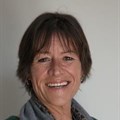
Key learnings and challenges from SA Outdoor Measurement Council's journey

In the previous two Pamro conferences, Daniel Cuende (from Cuende Infometrics) explained the OMC model but Fourie says until now they've not gone in to detail with regards to the data collection and the quality control aspects related to the project.
Overview
In 2011, the OOH industry historically locked a comprehensive currency measurement. The initial measurement was grounded after it was discovered that Roger Percy had patented the use of GPS technology for OOH research until 2021. The cost of the exercise using GPS technology was too expensive and the tender was never awarded.
In 2012, the OOH industry resigned from Saarf to pursue its own mandate. The key objective was to build on the framework identified by Kuper Research in their Future Proofing Framework. Lyn Jones and Terry Murphy were appointed to drive the process.
In March 2013, the OOH industry began discussions regarding the future of OOH research. Media owners and buyers were included in the discussions in 2014. A methodology and the OMC Jic structure was finalised.
"You don’t know what you don’t know." Fourie says never was there a truer sentence for the OMC journey. Unexpected challenges were discovered travelling down this road, or rather up the hill, over the past three years. In the world of market research, the respondent and the interviewer’s reality is key.
Unexpected obstacles/challenges
Challenge – They couldn’t use any tracking devices due to the Roger Percy patent issues: You cannot use any GPS technology for any OOH research up until 2021.
Solution – South Africa is the only country in the world making use of travel patterns and travel trips from recall from respondents and not from a GPS device. Trip information was gathered from the respondents’ recall through a detailed and sequential questionnaire. Their destination, address and specifications are obtained by gaining as much information from the respondent as possible to verify, to update and to correct from Google Maps and point of interest databases.
Challenge – People didn’t know the addresses they were travelling to. For example, the addresses of family members, friends and even their work addresses.
Solution – With the help of landmarks and Google Maps, they managed to obtain the addresses.
Challenge – Respondents were suspicious about the really detailed questionnaires and concerns were raised with regards to safety.
Solution – They had to elevate the explanation around the purpose of the project and what the information was going to be used for.
Challenge – Time. Respondents got bored and they were time-poor.
Solution – The research team only had 10 minutes with the respondents and had to keep the research simple and interesting. So they designed the questionnaire around the respondent and not just around the research objectives.
Challenge – Tracking of travel patterns was made difficult because the respondents couldn’t remember the sequence of their travel behaviours.
Solution – The questionnaire was revised in 2014. The new questionnaire shows the respondents a list of 14 destinations and then asking them which of these destinations they have travelled to. They then gained the trip information trip by trip, not necessarily in a sequential order.
Challenge – Complexity in trips data. Some of the respondents could not provide high-quality trip information.
Solution – They went through each and every destination, looked at the sequencing to see if it logically made sense. In some instances they had to change the beginning and the end destinations.
Challenge – Standardisation of results, for example spelling of names.
Solution – They had to build standardisation cubes into the questionnaire programming to cater for inconsistencies. They also had to standardise the devices they were using because they discovered that the devices were capturing the times in a different formats.
Challenge – Available geographical information. In some areas, no street information was available.
Solution – The most practical solution was to capture the GPS coordinates directly from Google Maps and add it to the address data.
In conclusion, Fourie says building solid foundations takes time. In year one, lessons were learned and the team had the opportunity to understand the complexity of gathering this kind of data. In year two, the implementation of learnings was still a continuous process for improving the quality of the trip data. The changes they implemented resulted in an increase in trip totals with a high quality of address information. In year three, field work was completed and the data was stable and consistent. In year four (2017), they are currently in-field busy with a second wave.
About Juanita Pienaar
View my profile and articles...
